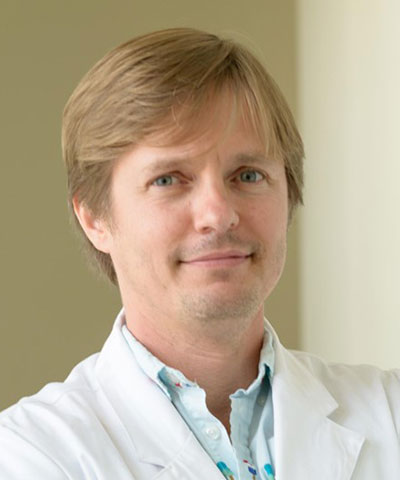Backed by a $3 million grant from the National Science Foundation, a University of Florida research team is combining living cells with solid-state materials to develop better tools for environmental monitoring.
The idea revolves around biotechnology, which uses living organisms and biological processes to develop products and technologies. The UF engineering team plans to program living cells — from bacteria or sea anemones — like computers to create biosensors that can help determine harmful pathogens and toxins in the water in real time.
Ideally, this will make a critical safety process shorter; the quicker pathogens are detected in a water sample, the sooner the public is protected.

NSF granted the Trailblazer award to UF Physics Professor Tommy E. Angelini, formerly of Mechanical and Aerospace Engineering (MAE), based on his proposal, “Bringing the Solid State to Life with Cell Crystals to Transform Biosensing in Environmental, Health Care, and National Security Applications.” Angelini developed the concept while in MAE.
“In my view,” Angelini said, “we can get reliable, coherent and controllable new properties to emerge in systems made from living cells if we arrange them in crystalline patterns and we use synthetic biology to program them specifically for being arranged in crystals. We can basically remake solid-state physics, where cells replace the atoms.”
Here, the key term is cell crystal. Scientists have been studying crystal structures of inorganic materials since the 1800s using early versions of X-ray scattering.
“The most important atomic crystal on Earth might be silicon,” Angelini said. “It’s crystalline in structure and is what makes computing possible. It was the development of solid-state transistors back in 1947 that made the world where we are today.”
Those solid-state transistors are responsible for the computer-in-your-pocket tech revolution we enjoy today, including artificial intelligence. But biotechnology, based on living cells, remains highly unreliable.
“People have been trying to make portable digital biosensors for a long time, and it’s still a huge area of focus in modern engineering research,” he said.
Angelini’s UF team plans to mimic solid state materials with programed living cell crystals to transform biosensing in environmental, health care and national security applications.
“The cells will either be engineered bacteria or engineered cells that come from the embryo of a type of sea anemone,” he said.
The project intends to use the unique sensing capabilities of whole cells and the stability and scalability of solid-state platforms to create sensitive, selective and portable biosensors for detecting pollutants and other environmental threats in real-time.
“We’ll be able to make little biosensing chips where we have our sensing cells in a crystalline array that we expose to contaminated water. When pathogen A is there, one pattern of collective behavior emerges. With Pathogen B, a different response emerges. When pathogen C is there, a different response emerges.”
The portable biosensor chips, ideally, will look like microscope slides about the size of a credit card. The cells will be between two slides, and water to be tested will be dropped in a tiny hole at one end, Angelini said.
The team also includes UF engineering professors Amor Menezes, Kiley Graim, Carl Denard, Piyush Jain, and Sindia Rivera-Jimenez, all Ph.D.s.
This Trailblazer award also has an outreach component that will result in a hands-on exhibit at the Cade Museum for Creativity and Invention in downtown Gainesville. Students are building the exhibit, which Angelini hopes will open in spring of 2027.
“It will be a visually captivating, interactive, display — a giant robot arm printing cool things into a clear tank containing a support medium,” Angelini said. “It will run continuously, printing things, sucking them back out, letting the users select what it prints. There will be educational materials about how it works and all the science and technology behind it. We can use it to teach about pretty much anything.”

